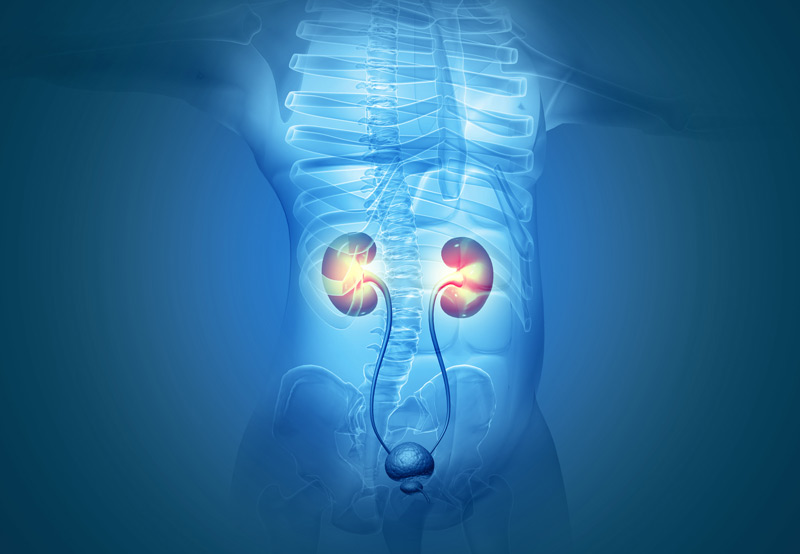

A ureteral stricture is a narrowing of the muscular tube that carries urine from the kidney to the bladder. This narrowing impairs kidney function and can even lead to damage over time. Another side effect of a ureteral stricture is dilation of the kidney (known as hydronephrosis).
Symptoms of Ureteral Stricture
Patients with a ureteral stricture may experience pain, kidney stones, and urinary tract infections.

Causes of Ureteral Strictures
Ureteral strictures may be caused by a congenital obstruction, stone-induced stricture, radiation, iatrogenic injury, retroperitoneal fibrosis, and malignant obstruction.
- Congenital obstruction: If a patient was born with an obstruction, it is usually discovered at a young age. In some instances, the obstruction is discovered in adulthood. The obstruction can occur at the junction of the ureter and kidney (called the ureteropelvic junction, or UPJ), or at the ureter and the bladder (called the ureteral orifice).
- Stone-induced strictures: Passing a kidney stone or undergoing surgery for kidney stones may lead to ureteral strictures.
- Iatrogenic: An iatrogenic injury is caused by an abdominal surgery. In most cases, operative injury to the ureter is seen during surgery and repaired immediately. But it is possible for the injury to be missed, leading to a delayed diagnosis.
- Radiation: Treating cancers in the abdomen with radiation can lead to narrowing of the ureter.
- Idiopathic: An idiopathic ureteral stricture indicates the cause is unknown.
- Retroperitoneal fibrosis: Ureteral stricture may be caused by inflammation around the ureter from an unknown source.
- Malignant obstruction: An untreatable or recently-discovered cancer may compress the ureter and cause an obstruction. Though this isn’t a true stricture, symptoms may appear similar.
Common Sites of Ureteral Strictures
A ureteral stricture may occur at various sites, requiring a specific approach to treatment.
- UPJ obstruction: This type of obstruction is associated with a congenital problem that may not be discovered until adulthood. Symptoms of a UPJ obstruction include infections, pain in the back, and kidney stones.
- Proximal ureteral stricture: These strictures are generally associated with previous repairs of UPJ obstructions or kidney stones. The term “proximal” means the stricture is near the top of the ureter and the kidney.
- Pan-ureteral strictures: Pan-ureteral strictures extend from the kidney to the bladder, or they may have narrowing at multiple sites throughout the ureter. These types of strictures are most commonly seen in patients with recurrent kidney stone disease.
- Distal ureteral stricture: This stricture is near the bladder or at the level of the ureteral orifice. Surgical injury, stones, or radiation to the pelvic organs may cause distal ureteral strictures. A stricture at the level of the ureteral orifice is typically congenital or it may be associated with treatment for bladder tumors.
Treatment For Ureteral Strictures
Ureteral strictures at the UPJ level may be treated by pyeloplasty. Other treatment options include buccal mucosal ureteroplasty, ureteroureterostomy, Boari flap, ureteral reimplant with psoas hitch, ileal ureter, ureterolysis, and stent placement.
